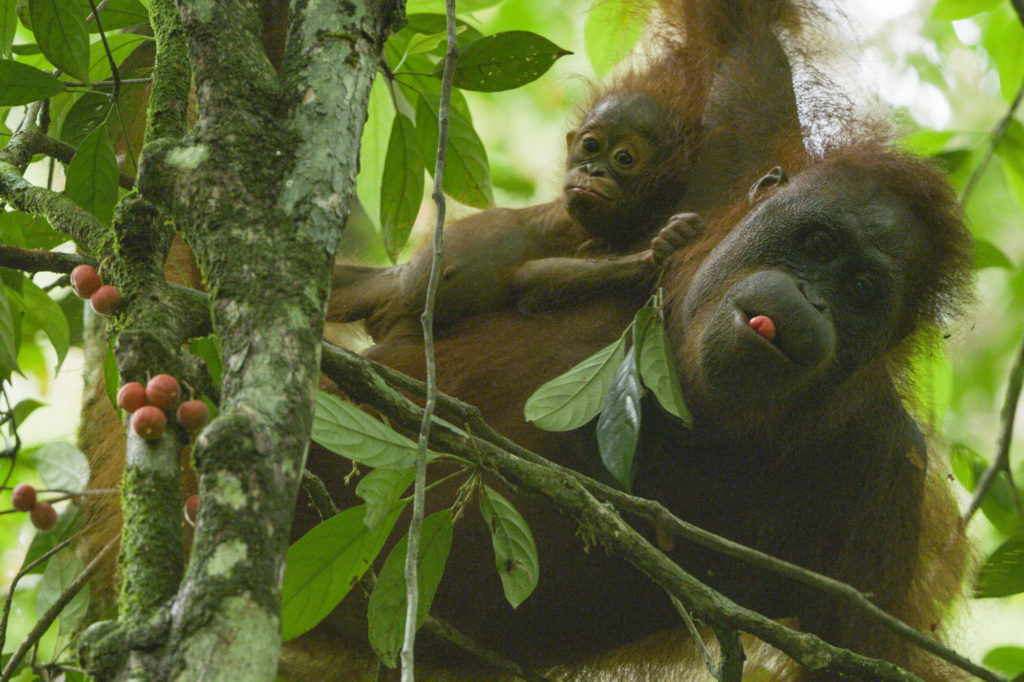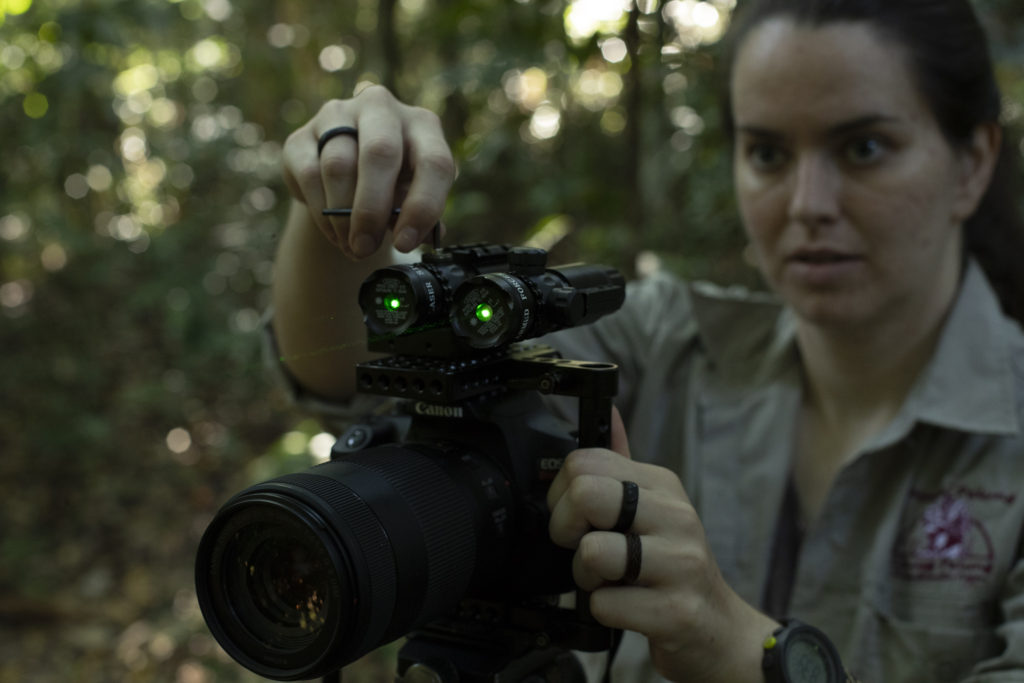
Project Overview
We examine whether orangutans extremely long juvenile period (7-8 years) is a response to their variable environments and long periods with very low food availability. We are using new technology and research techniques in concert with ongoing behavioral observations of wild orangutan behavior to study the ecological risk aversion hypothesis. In order to study orangutan growth we built a parallel laser camera. We use a laser mounted camera to project two parallel lasers (human and animal friendly) on the orangutan and then take a picture. This gives us a known distance, and a digital tape measure, which we can use to measure limb lengths and other body parts. We can measure changes in wild orangutan growth rates and can see which factors affect growth rates, for example changes in food intake.
In addition, we also collect fecal samples, examine chewing efficiency, and measure nursing rates. We can learn about offspring milk intake from fecal samples. Mother’s milk contains different levels of carbon and nitrogen than plant foods, which allows us measure ratios of carbon and nitrogen isotopes in fecal samples and compare these differences between mother and offspring. Our findings improve our understanding of the ways orangutans have adapted to their rainforest environment through long periods of juvenile development.

Related Publications and Presentations
Kane, EE, TW Susanto, & Knott, CD (2021). Developmental tradeoffs: fruit availability and age influence mother and offspring activity in Bornean Orangutans (Pongo pygmaeus wurmbii). 90th Annual Meeting of the American Association of Biological Anthropologists, 174:S71,53.
Zdanowicz, V, EE Kane, TW Susanto & CD Knott (2021). Fiber Digestibility in Wild Bornean Orangutans: Age-Sex Class Differences and Implications for Slow Juvenile Growth. Seventh Annual Meeting of the Northeastern Evolutionary Primatologists. Boston University.
Knott, CD and FS Harwell. (2020). Ecological risk aversion and the evolution
of great ape life histories. In: L. Hopper, & S. Ross, (Eds.),
Chimpanzees in Context (pp. 1-35). Chicago: University of Chicago Press.
Kane EE, TW Susanto, NL Conklin-Brittain, and CD Knott. 2019. Ecological competence in wild Bornean Orangutans: food sharing, processing, and nutrition. Paper read at Third Lembersky Conference in Human Evolutionary Studies, at New Brunswick, NJ.
van Noordwijk MA, SS Utami Atmoko, CD Knott, N Kuze, HC Morrogh- Bernard, F Oram, C Schuppli, CP van Schaik, and EP Willems. (2018). The Slow Ape: High Infant Survival and Long Inter-Birth Intervals in Orangutans. Journal of Human Evolution. 125: 38 49. doi.org/10.1016/j.jhevol.2018.09.004
